
MENUMENU
TALK TO AN EXPERT
Special Hours: 7AM – 6PM PST
TALK TO AN EXPERT
Special Hours: 7AM – 6PM PST
After discovering a critical gap in the power system industry, Al Thomason came out of retirement to solve the problem. With the help of his business partner Rick Jones, they developed a game-changing alternator regulator that utilizes current, voltage, and temperature to deliver the most precise and effective charging possible. Through the acquisition of Wakespeed by Dragonfly Energy, Al is playing an integral role in offering full system integration with alternator charging in the RV, marine, and commercial transportation markets.

With more than 50 combined years of electrical system design and marine system know-how, Wakespeed founders Al Thomason and Rick Jones have paved the way to a new generation of charge control technology. Addressing common problems in the industry, Wakespeed developed and offered a way to charge smarter. Their game-changing alternator regulator offers optimal battery management in RV, marine, and commercial transportation applications. The WS500 Advanced Alternator Regulator is the only alternator regulator available that can utilize current, voltage, and temperature to deliver the most precise and effective charging possible for 12V, 24V, and 48V battery systems – with configurability for voltages in between – making it the perfect solution for charging lead acid-based, or new generation LiFePO4 lithium-ion battery banks.
In this episode of the Li-MITLESS ENERGY Podcast, Wakespeed’s success is attributed to its unique perspective on the energy resources market. Al Thomason, the mastermind behind the Wakespeed brand, came from the private sector with a personal goal of early retirement. After achieving this goal, he and his wife sold everything and embarked on their new life at sea. After discovering that alternator charging devices didn’t adequately listen to the system’s battery, he came out of retirement to develop his own. Now, the Senior Application Engineer of Dragonfly Energy and Founder of Wakespeed sits down with host Dr. Denis Phares to talk about charging power systems via a marine or van alternator. Through reliable lithium-ion batteries and the innovative WS500 alternator regulator, Dragonfly Energy, and Wakespeed are offering fully integrated systems with their robust line of products.
Listen to the full episode or watch the recording on our YouTube channel, and be sure to keep up with Al and Wakespeed through their Facebook, YouTube, LinkedIn, and Website!
Denis Phares: 00:15
Hello, I’m Denis Phares, and welcome to The Li-MITLESS ENERGY Podcast. And today I’m here with Al Thomason, of the Thomas and Jones Company, the mastermind behind the Wakespeed brand. And this is pretty significant for us because Wakespeed represents the first significant acquisition for Dragonfly Energy. So welcome to the program here Al.
Al Thomason: 00:39
Well thank you, Denis. It’s a pleasure to be here this this morning.
Denis Phares: 00:42
So, in light of the acquisition, Dragonfly acquired the assets last spring, I just wanted to talk to you about what it meant to you what it felt like as an entrepreneur growing this company, growing this brand, and then going through this acquisition process.
Al Thomason: 00:58
Yeah, well, I gotta tell you, it was very exciting. I mean, you know, the Wakespeed product, the Wakespeed brand, we’ve been humbled by how it’s been adopted and accepted by the industry. We obviously had something of value, we grew so fast on our own as Thomas and Jones, that we were really at the point of facing to have to expand people, facilities and Dragonfly reached out to us. And through the great conversations, we saw a great opportunity to accomplish a lot of the growth without us having to do it ourselves, and then also to join with a really great partner. From a personal standpoint, I’ve come more from the private sector, and I’ve seen acquisitions, I’ve always been on the other side. This is the first time for an entrepreneurial to have an acquisition. And it really has been kind of rewarding, frankly, to have people recognize.
Denis Phares: 01:52
Right, well your reputation preceded you. Obviously, Dragonfly was looking for these, this capability. And Wakespeed had a fantastic reputation in the market, both in the RV markets and in the marine markets. So, let’s talk a little bit about the origins of Wakespeed. So, you actually came, as you noted, from the private sector… “Yeah.” retired, and then became an entrepreneur. So how did that pan out?
Al Thomason: 02:17
Oh, boy, I tell you, it’s like many things in life, though life leads you right? So, by choice, if you way back during my summer jobs in school, one of the companies that I worked for, individual big stack of money, retired, died two years later, and I thought that was nuts, so I had a personal goal to retire early. And we accomplished that. My wife and I, we sold everything, we moved on the old wooden trawler, and we started cruising the Pacific Northwest and up the Inside Passage up in Canada and Alaska. And that’s what we did. I mean, we were away from the docks in the springs, we’d leave, and we go north, and we saw people we go more north. A hundred percent energy independent, a hundred percent resource independent, we come in once a month, right to get provisions. So, through that whole experience, because of my background, I’m actually degreed in Computer Science and Electronic Engineering. I’m really curious about what’s going on with the charging system. And I found that the system that all the glossy magazines told me to put in, wasn’t working correctly. It sort of worked. But it really didn’t work correctly, it didn’t fully charge the batteries. And if we were just away for a weekend that wouldn’t have mattered but were away a month at a time. So, it really mattered to make sure you had the batteries that were charged correctly. And the biggest lacking that we found was the missing of the battery current. So that’s how the Wakespeed came about, this technology. Created the product, to monitor the battery current and let the batteries tell me when they’re fully charged and what their needs are, rather than trying to guess at it.
Denis Phares: 03:43
So, this is, this is part of the secret of Wakespeed success, really, because you were living the life, you saw the need. It’s not like you were trying to get into a market or something you were living the life you’re living on the boat, trying to understand how to live off of your energy resources that you had. And you saw a glaring need in the process. So, can you talk a little bit about that need that you identified?
Al Thomason: 04:07
Yeah, 10 years, we’re living that. And I’m not going to suffer living for 10 years. And like I say the biggest difference is we listen to the battery. And it actually goes beyond that when we get into the more later systems. But even back then the real thing was, you listen to the acceptance, the battery will tell you what it wants, but you have to pay attention to voltage, temperature, and current and that was the technical detail that was missing. Most of the glossy magazine charging systems out there, alternator base charging systems. They didn’t do that, they had other ways of accomplishing and they worked okay. But they really didn’t fully charge the battery. They didn’t properly maintain the batteries. You’d lose lifespan. I mean, it’s just a whole bunch of issues. That was the first and fundamental difference. Now as we move on. I don’t know if you want to talk about this now but as we move on into later days with the adoption of the lithium batteries because this, this original battery was a forklift battery. It weighed 2000 pounds. And, I had to pull the ballast out of the boat to let me put it in, right. But now when we move forward to the lithium technologies, that listening to the battery concept is even more important. So we do things like we’ll instrument the battery fully. If we’re like dropping in batteries, we have some support with that. But if we have the ability to communicate with BMS’s that lets us even listen more closely with the battery to its needs and status.
Denis Phares: 05:26
Well, first of all, you don’t ever have to ask if I’m willing to talk about lithium batteries. I’m always willing to talk about that. But so. So, this is an interesting point here. So, you started out with big lead acid batteries. And you basically saw issues with charging those from the alternator, those issues became even more prominent when you switched over to lithium. So specifically, for the big lead acid batteries, you’re out, you know, on the water for a month at a time or whatever. What would… what made it clear to you that you needed a change in how you were doing the charging from the alternator?
Al Thomason: 06:01
There’s a product out there called the Link 10. That is a battery monitor. And being the curious type of guy, I’ve actually broken the Link 10 pressing the little button to see what’s going on with a battery.
Denis Phares: 06:13
You are a true engineer.
Al Thomason: 06:14
I am a true engineer and I’m bored, I’m retired, right? I’m not there… I’m not in the office designing things anymore. So literally, I’m watching the battery to see what’s going on while it’s trying to charge. And what I discovered is this thing, would go into float prematurely, it wouldn’t fully charge the battery. So, you asked the question, “What prompted me to actually create this technology?” On our first shakedown cruise we are going up the Columbia River, not charging the battery, and we’re trying to live off this thing. Literally, I stopped the boat in the middle of the Columbia River, turned the engine off, turned it on, again, to try to restart the charge cycle. Because if we go for a period of time and pour more energy into the battery, that’s just nuts, I’m not going to do that I’m not going to crawl into the engine room and unplug the regular harness and plug it in or turn the engine off. I’m just not going to do that. So that particular product failed. When I got back from the shakedown cruise, I did what’s known as a float test. And by the way, the product failed the float test as well. I had previously made a DC generator that had a part of it as an alternator regular, I just pulled that out and made it a standalone alternator regulator.
Denis Phares: 07:19
You’re definitely a tinkerer. “Yeah.” So that you know… How would you recommend to folks that actually want to get out of the water and live this type of lifestyle, who aren’t necessarily tinkerers? I mean, you’re able to solve the problem while you’re out on the water. You know, so how, I guess… maybe that spurred you to try to create a solution for folks that aren’t tinkerers, is that accurate to say?
Al Thomason: 07:42
Well, that’s where we ended up at. And the short answer to your question is buy Wakespeed. I mean, we’ve got the product, right. But yeah, that leads into your real question. So as time moved forward, I met a gentleman by the name of Rick Jones. And he and I started Thomas & Jones Company with the brand of Wakespeed Offshore. That’s where the Wakespeed 500 came from. I took my tinkerer project, if you will, we commercialized it, put it in a better box. And you all the documents to go around that and we started offering it for sale. Rick is a brilliant guy; he actually has a lot of experience in the industry. He, you know, worked for some glossy magazine companies, you can look on their website and see his history. But yeah, he and I formed Wakespeed. And that’s really how stuff started.
Denis Phares: 08:31
So, you and Rick are pretty different personalities. Can you talk a little bit about how that worked in an entrepreneurship scenario. And you grew this company together?
Al Thomason: 08:41
Yeah, we are definitely different people. I think the easiest way to describe it the most people might get he’s an Apple guy, I’m a Windows guy. Right. In terms of how we work together, we actually, it was a great synergy. We both understand the industry. We focus primarily from the market of the marine industry. But to be frank, the RV industry is what… what had the most interest. About that timeframe… I’m kind of sidelining a little bit… about that timeframe, lithium batteries, and specifically 48-volt lithium batteries were starting to become utilized. It was the early edge for it. Our product had the capability to do 48 volts out of the box. We didn’t have to change anything; it was designed that way. And it also had the capability of treating lithium batteries correctly. So really, we found most of our adoption into the RV market space. And this is where Rick and I really kind of worked well together. He’s very much more on the relationship, the sales, the marketing side, I’m much more on the technical side. So, between us… and we also find that very often we’re kind of like a married couple in the sense that we have a very common view. It’s very rare that we have a difference of opinion on how we should move forward on things. So, it actually worked for really well, and we’ve become great friends throughout this whole process.
Denis Phares: 08:41
It’s funny when our interaction with Wakespeed started with Rick, he was the people guy. He’s the one that we actually saw at trade shows and was the vocal one. And then I got to know you through the subcommittees on the RVIA or, you know, some of the standards committees. And what I noticed about you was that you were also very vocal in an engineering sense. And you were very familiar with requirements with standards and the development of those standards, and especially the coding, and how you actually develop the programs and the baseline to accomplish what the organization’s needed. So maybe you can talk a little bit about why you have that background because you did start off was it at IBM, you started out or spent some time there?
Al Thomason: 10:59
No, I spent time at IBM, but that was later in my career. Okay. My first career was a systems programmer. I wrote languages. I wrote databases, I didn’t write things in languages, I actually wrote the language itself. My, as I mentioned, I’m dual degree, Computer Science and Electronic Engineering. My passion is actually embedded control. That’s something I’ve always enjoyed doing. So, I’d rather make the microwave oven beep then write an application for airline reservation, right? That’s just how I’ve been in the beginning. My senior project I wrote an operating system for a Kim 1 computer. So that’s kind of what my background was. As I go through my career path I started as a systems programmer, worked for a variety of companies. I worked for Seiko Epson for a period of time, I worked for a telco company, large telco computer switches, ancillatory product, voicemail number forwarding. IBM, you mentioned, at that time, I had kind of moved into the marketing aspect, Product Marketing portfolio, this is where I got a lot of standards positions. I also was… I had a manager told me once I was pretty effective working with engineering. And the reason was because most of my contemporaries came up through business school, I had the technical background, so I could work with engineers, and I could still tell when they were trying to snow me. So, when I look at stuff, I’m a believer in open standards, you’ll notice the Wakespeed product uses open standards, RBC, J 1939, you know, CIA 303, we utilize open standards, we publish our standards. And then it also has that kind of combination of hardware and software for the embedded control.
Denis Phares: 12:40
So, this is great for the industry in terms of uniformizing the systems, but I think it highlights the importance of the systems. So, we at Dragonfly, obviously, we’re a lithium-ion battery company. We develop technologies for lithium-ion batteries, we sell lithium-ion batteries, but now it’s becoming more of a systems approach, really. So, we’re developing full systems for your RV, for your boat. So, Wakespeed features prominently in that concept. So obviously, communication is important. But maybe you can talk about the importance of the system’s approach to developing a really robust product for the customer.
Al Thomason: 13:22
You know, I think I was counting the number of times you use the word system in that question. And I’m really pleased to hear it because it’s something I’ve been talking about for a very, very long time. If we go back in the day, if we go back 20 years, when we had the lead acid batteries. Lead acid batteries, you know, it’s a very long technology, and they’re rather forgiving. You could put together a system, a lead acid system with components, discrete components, and largely it would work because you know, the battery could take a lot of abuse. When we get into the lithium and more so, when we get into high energy lithium, which I personally defined as anything that has 3000 watt or higher, alternator head, and we’re doing a lot of 5000 Watt, even 10,000 Watt charging systems. When you get into these higher energy deployments, and lithium-ion base battery systems, you really do have to look as a system, everything has to be designed to work with each other, has to be configured and deployed to work with each other. You could get away with a lot of stuff when you had just 100-amp alternator and a 12-volt, couple of golf cart batteries. You just can’t have that level of cash reality today. It really truly has to be a system product from in the end.
Denis Phares: 14:39
Well, we’ve worked hard to create batteries that will work in all kinds of different scenarios. Obviously, it’s important for us to be able to offer a product for anyone. And so, we’ve had to make it as foolproof as possible, but it is exciting for us to actually make and sell full systems and Wakespeed manages the interaction between the alternator and the rest of the system. So, let’s talk about alternator charging. Alternator charging is critical in an RV because you drive to your destination, you expect your batteries to be full so that you can immediately start living off your batteries. Similar for a boat, right? So maybe you can talk about the pitfalls associated with trying to charge a battery, specifically with an alternator.
Al Thomason: 15:26
Yeah. As that, if you go and look, just so you know, there’s a lot of effort that goes into making sure this stuff works from the Wakespeed standpoint. And like, if you go to the Wakespeed website, you’ll see there’s a list of about 15 different battery manufacturers that we advertise that we support. And that’s because we’ve taken the time to create a system and make sure it actually works. Some of the details, the biggest detail with an alternator base charging system is what’s known as a load dump. So, lithium-ion batteries have a battery management system, BMS, its job in life is to protect the battery. And if it gets upset enough, it will disconnect the battery. That is known in the industry as a load dump. And that could be a catastrophic event, you can… well you can look on the websites and you can find more details about this. But it’s something you want to avoid; you want to make sure you have protection for it. That’s probably the single biggest difference that you have to pay attention to from an open-air based charging system, you want to make sure that you can avoid that from happening. So, you want to make sure your charge profiles are correct, you want to make sure you’re instrumenting the battery correctly, so that you know what’s going on with the battery and you stay away from that third rail, if you want, if you will. You want to make sure that you have a knowledge of what the battery is going to do, either at real time knowledge through a communication or like in the case of some of the drop ins, where we don’t have that, engineering, the engineering level of interaction. So, that both Wakespeed and the battery manufacturer, we both know exactly what’s going to happen with that battery and when it becomes stressed. And then we can manage your charge profile process to avoid that, to stay away from there. That’s the type of stuff I’m talking about. That’s the engineering approach from a system standpoint. That’s the additional need that we’re at with these high energy lithium ion installs.
Denis Phares: 17:17
Great. Yeah, I love it. I mean, obviously load dumps or the possibility of load dumps is something we’ve been familiar with for years. We’ve had to address it with our products through redundancy, you’ve got multiple BMSs they’re not all shutting off all at the same time, you can at least mitigate the risk. But ultimately, the most foolproof solution, especially in a high voltage system, which is becoming way more prevalent, is the Wakespeed solution. We want to be able to monitor and discharge the energy from the alternator before there is a cut off as you describe it, it could be potentially catastrophic. So, can we talk a little bit about what that what that failure looks like? It’s… so you have a voltage spike, then what happens?
Al Thomason: 18:04
Yeah, so, this is a well-known phenomenon. It was the it was discovered back in the 50s and 60s by the automotive industry, when they moved from generators to alternators, and they defined the loads dump, and load dump is defined as the battery being disconnected when alternators active. And back in the day, it typically happened because maybe the fire department had to cut the battery cable or more likely, because of poor maintenance on your car and you had corroded cables, you went over a railroad track, and you got that disconnect. And then a 12-volt system, I mean the industry is now an ISO spec. It is defined as a test pattern of 100 volts spike in the 12-volt system. 200 volts, for you know, which keeps multiplying go up. It is absolutely traumatic event and there are mitigations for it. In the alternators there’s suppression devices, there’s external ones, there’s keeper batteries there’s… again, you know, the readers or the listeners can go on the web and look at, you know, different approaches for it. But that’s what a load dump is, not something that’s new recently, it’s been known for decades. It’s become more of an issue, because when we look at lithium batteries, because we have this battery manager system in there, and because lithiums are less, the technology of lithium… and you can answer that a lot better than I can. But because the chemistry of lithium is less tolerant to being stressed, whereas a lead acid battery might boil the water off, a lithium battery bad things can happen, you’ll damage the cell or other things. That BMS introduces the higher probability or potential for doing the disconnect. And that’s why this whole concept of load dump has really revisited as lithium batteries are being adopted more and more without alternator-based charging systems.
Denis Phares: 19:52
Well, I think it does highlight the importance of a systems approach. I’ll say it again for you. I think it highlights the importance, because whether you have a lead acid battery or lithium battery, there are situations that can create an event, you know. Whether it’s a catastrophic event or an event that shuts down your power or something, that’s what needs to be avoided. That’s where the design of the system is critical. And that’s where, you know, obviously, we’ve been really working hard to try to be on the forefront. The Wakespeed acquisition is a is a very big part of that. So, the other thing moving from lead acid to lithium batteries, and this might be viewed as a great thing. Lithium batteries charge a lot faster. “Yes.” What are the implications of that for an alternator?
Al Thomason: 20:42
You know I mentioned, not necessarily an alternator, but for the system, right? I mentioned early on that we had Wakespeed had great adoption in the RV space. A lot of our early adapters were lithium systems with 48 volts. And the value prop was, you can run, you can be dry camping all day, start your van up for 20 minutes, 30 minutes in the morning and recharge that battery. And that’s all you need. Don’t need a generator. You don’t need to like drive for hours. It’s that fast recharging that is a great value prop. We can put alternators now, you can get 24-volt alternators that are four or 5k Watts, very common, you know, 150, 200, 250, 248-volt alternator, you can get 24-volt alternators, you can get 48 volts alternators, very common in the 150-amp range. So now we’re looking at a 6k one. We’re at a tradeshow and one of our partners had a 48-volt, 300-amp alternator. Alright, this is a 15k watt head. Of course, we were doing Rock Paper Scissors to figure out who had to actually schlep it out of the trade show. And I’d often pull the old card. So, I didn’t have to do it. But we’re finding alternators are available to do much more power generation and that quicker recharge time. And this is going to become more and more important. It’s not just a lifestyle thing that you only have to start your engine for 30 minutes. But it’s also an economy thing.
Al Thomason: 22:10
You can, while you’re doing motivation, while you’re… while you’re actually moving the vehicle, the near incremental energy draw to drive that alternator is in a position, it’s in a state where the engine is much more fuel efficient than, like, if you’re using a dedicated generator, and you’re only running at that 20% load through classically, inverter chargers. You’ve got state initiatives like California, that is precluding the use of dedicated generators. So, this is a multifaceted transition we’re in, it’s a very exciting time. Where we are moving from, if you will, traditional generator base, you know, long charge times, two systems that can deploy lifestyles. You know, I carried back on my boat, I carried over 2000 pounds of lead acid batteries because I didn’t want to listen to generator, I was pretty rare. We’d go and anchor out somewhere, somebody pop in with a big boat and then fire the generator up for a couple hours in the morning, a couple hours in the evening, that was the norm. Right? I didn’t want that. Our solution was we pulled anchor and went away, we went somewhere else. But people don’t want that. They want to be able to enjoy their morning coffee without listening to kind of this classical approach. And that’s where these new lithium batteries and the high output alternators really are coming into play, you’ve got a lifestyle aspect. You’ve also got kind of an energy efficiency aspect because as mentioned those generators at light loads, they’re gonna burn four times the amount of fuel to make that that electrical energy versus incremental energy onto the, onto the car itself. And then you’ve got government regulations that are pushing… These are all kinds of aspects that are coming in and playing, that I believe is driving the interest into these higher energy, largely lithium ion-based systems.
Denis Phares: 23:55
I think we agree. Yeah, I think we share this, this view that it’s about lifestyle, but it’s also about energy efficiency. And we’re definitely very environmentally conscious at Dragonfly. But we don’t want to have to sacrifice lifestyle, you know. You want to be able to go out and RV, you want to be out, be able to go out and be on your boat. And there are high power activities, you know, whether you’ve got audio systems or whether you have you know, large appliances on your boat, on your RV, it’s important to be able to go out and enjoy the experience. That’s, that’s what we do, but we’re smart enough to be able to figure out how to do it in an energy efficient manner. So, I do you know, respect what you’re saying and appreciate that. So, you retired once, at some point, you’re going to retire again. “Oh, yeah.” You’re gonna go back on the boat?
Al Thomason: 24:57
The boats a big part of it. Right now, Viking Star is… “That’s the name of your boat?” It is. It is. Viking Star, it’s a 60-year-old wooden monk McQueen trawler, very classic and efficiency worthy, has a lot of good characteristics. And right now, she is incredibly angry at me. Because haven’t been paying attention to her. “Where is she?” Up in Friday Harbor, where I live. And that was unfortunate. I’m old and cantankerous enough that at the acquisition, I could say. Yeah, this is great, thank you, but I’m not moving, and you accommodated it, so I appreciate that. But yeah, I mean, we have to do some maintenance on Viking Star and get her back up to spiff and my wife and I, it still will be part of our lives at some point. You know, either weekends, or maybe we’ll do longer, longer trips and stuff that’s…that’s all in the future. There’s a lot of other fun stuff that happens between now and then. But I guarantee you one thing, I need to start paying attention to Viking Star a bit.
Denis Phares: 25:56
Well, we’re gonna have some fun before you go back on the boat. Developing systems, making the experience better, especially when you are, you know, when you do make that decision to go back and live on the boat again, which I hope you do, because all of this work that we’re doing is going to make that pan out a lot easier for you.
Al Thomason: 26:17
Well, I’m looking forward to getting back on the boat and testing some of these exciting systems. I know we can’t really talk about stuff in the future but, I’m really excited. And you know Viking Star is gonna be a great testbed. I know a lot of people talk about the Sprinters, but you know, fully energy independent, and I’m looking forward to not having two and a half thousand pounds of batteries and replacing it with just about 300 pounds and getting the same usage out of it.
Denis Phares: 26:45
Yeah, absolutely. Hey, Al, it’s a pleasure having you in the company. And Rick, it’s so much fun, you know, assimilating Wakespeed and really focusing on these on these systems and doing more product development, more than we would have otherwise. And it’s great to have you on the podcast.
Al Thomason: 27:05
We appreciate it. Thank you very much, and it’s wonderful to be part of the Dragonfly team.
Denis Phares: 27:10
I’d like to give a special thanks to my guest today Al Thomason. Be sure to subscribe to The Li-MITLESS ENERGY Podcast on any of your favorite podcast platforms.
Shop Best Sellers
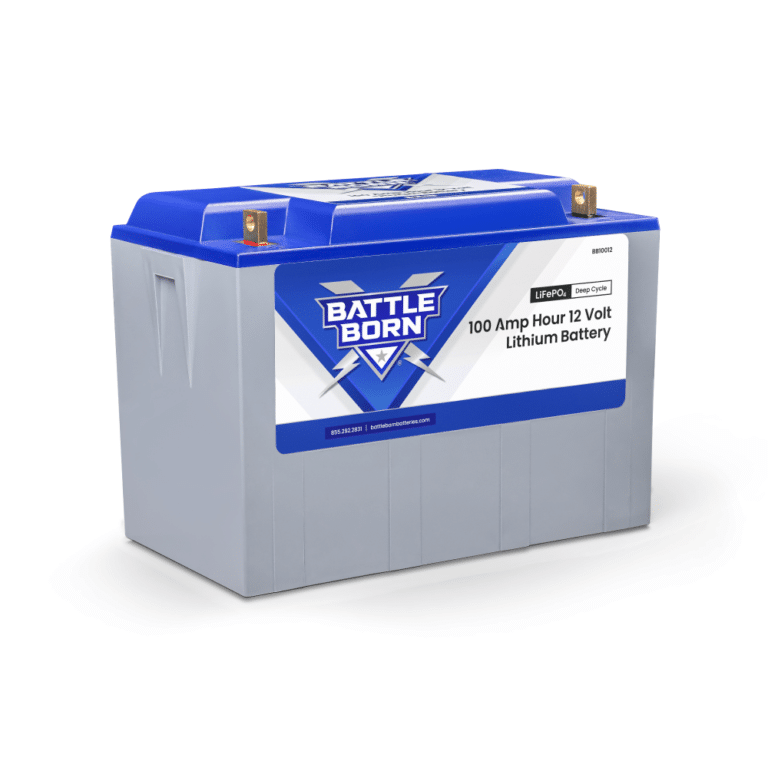
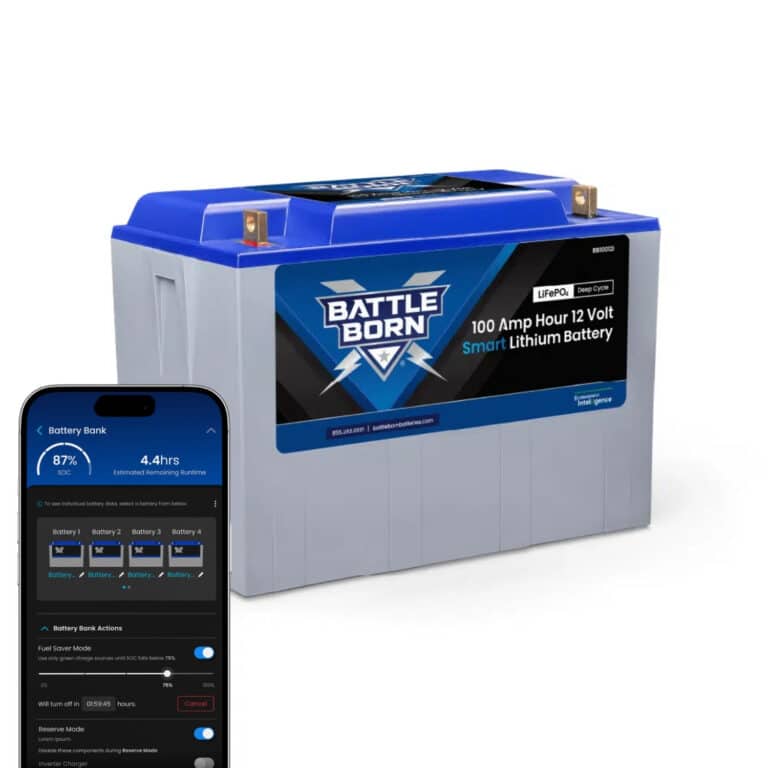
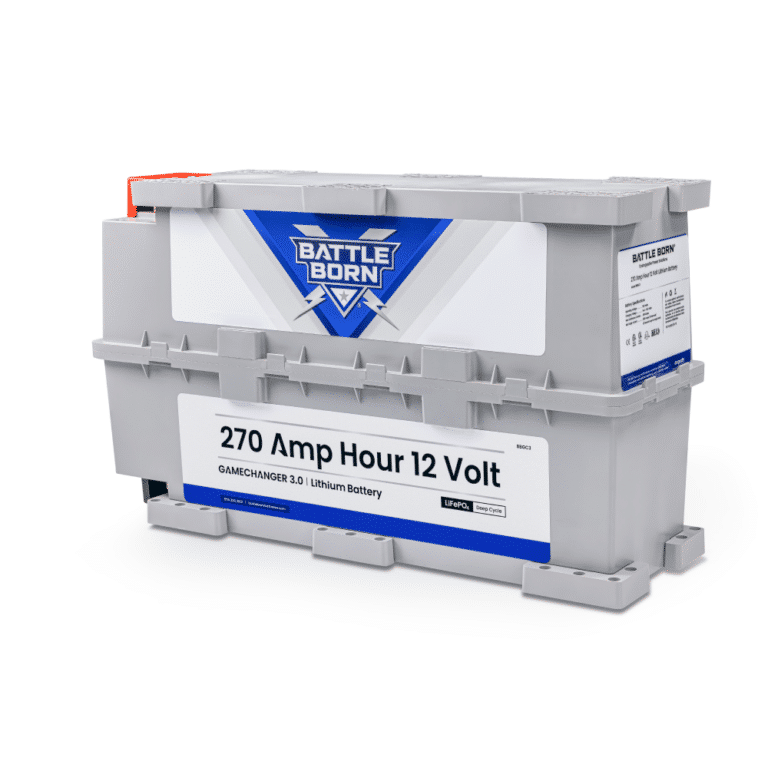
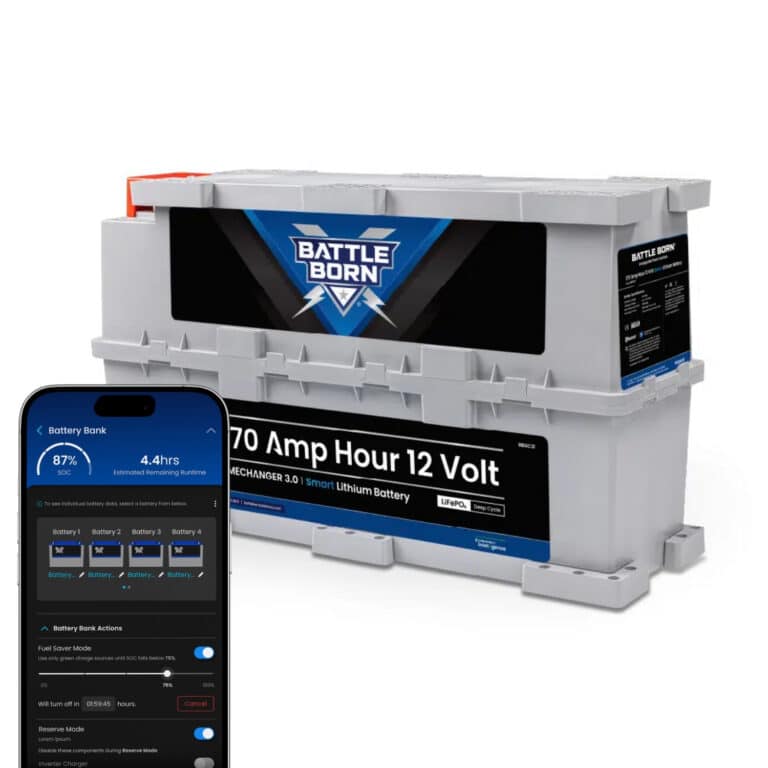
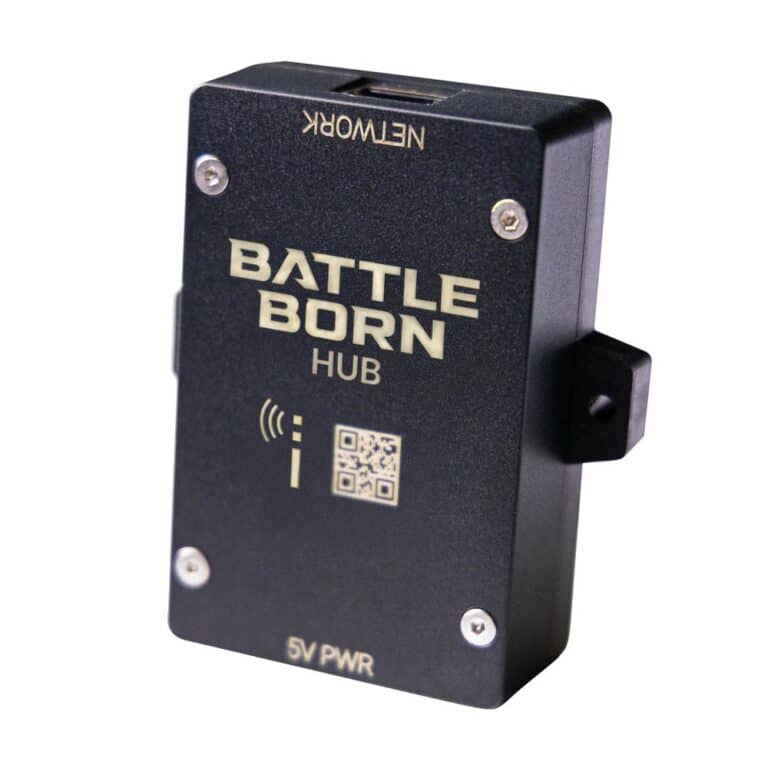
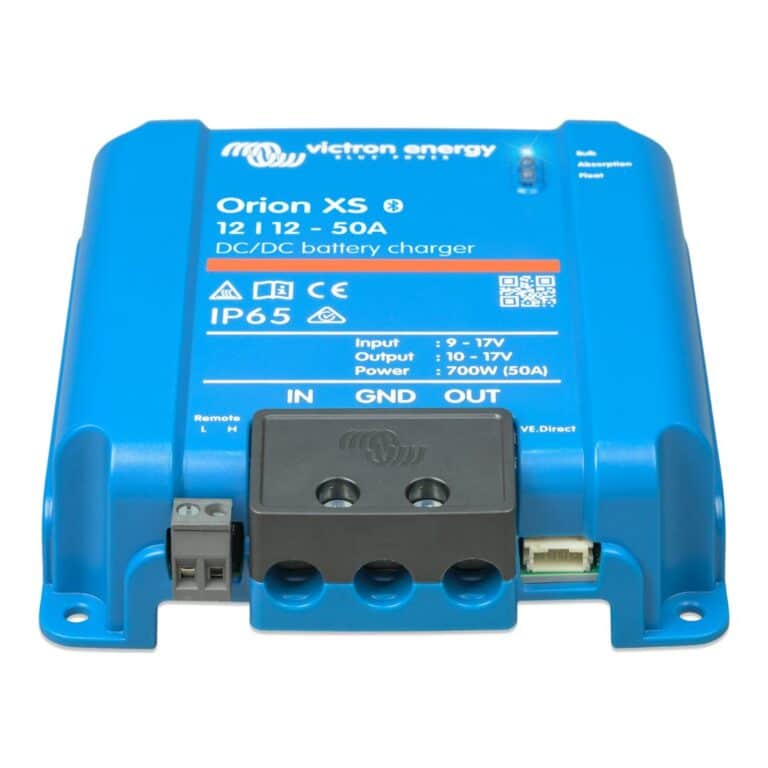
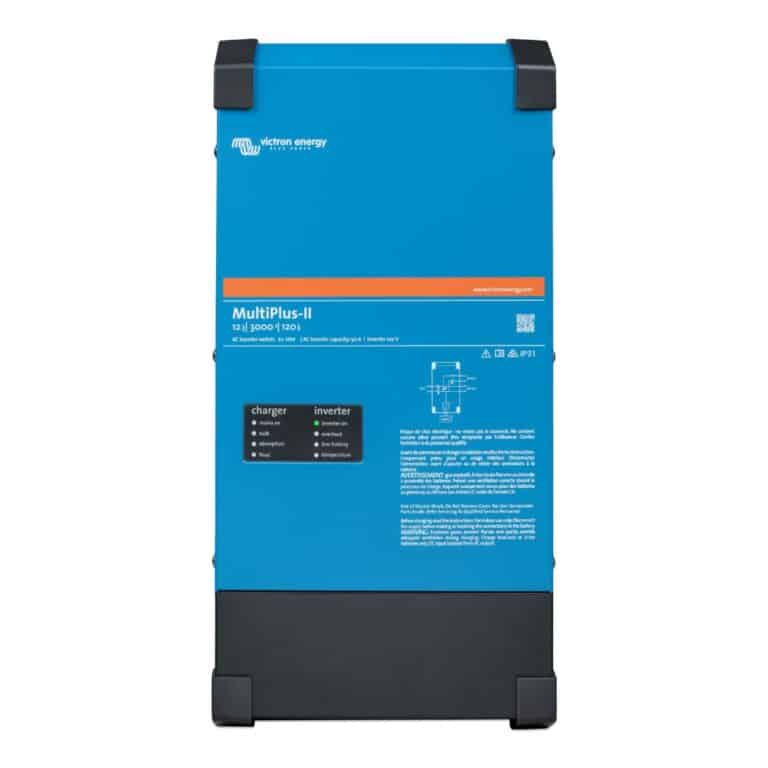

Ask a technical specialist now at 855.292.2831
Stay in the Know